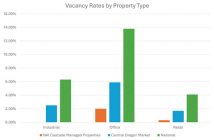If paid equally, Oregon women could afford more than one more year of food, 10+ months of rent. An analysis released for Equal Pay Day today shows just how much damage the gender-based wage gap is doing to Oregon’s families and economy. Women employed full time in Oregon are paid just 80 cents for every dollar paid to men, amounting to a yearly gap of $9,124. This means that, collectively, Oregon women lose more than $4.2 billion every year that could pay for basic goods and services that strengthen the state’s economy and are essential for the more than 163,000 Oregon households headed by women.
The analysis was conducted by the National Partnership for Women & Families when the U.S. Census Bureau released its most recent data. It is being released for the first time today. The full set of findings for Oregon, which has the 18th smallest cents-on-the-dollar gap among the states, can be found here. The National Partnership also found that Latinas in Oregon are paid just 51 cents for every dollar paid to white, non-Hispanic men.
These state-based findings are included in a new national report also released today, An Unlevel Playing Field: America’s Gender-Based Wage Gap, Binds of Discrimination, And A Path Forward. The report features original analysis, never released before, about the country’s wage gap across states, among women of color, and by parental and marital status. It identifies a punishing and pervasive gap that disproportionately harms mothers, single mothers and mothers of color, who can suffer from double and triple binds of discrimination.
“At a time when women’s wages are essential to families and our economy, the persistence of the gender-based wage gap is doing real and lasting damage to women, families, communities and to our nation. It defies common sense that lawmakers are not doing more to stop gender discrimination in wages,” said Debra L. Ness, president of the National Partnership for Women & Families. “This analysis shows that women and families are losing thousands of dollars in critical income each year that could pay for significant amounts of food, rent, gas and other basic necessities. The effects ripple throughout our economy.”
According to the analysis of Oregon, if the gap between men’s and women’s wages were eliminated, a full-time working woman in Oregon could afford food for more than one more year, mortgage and utilities for six more months, rent for more than 10 more months, or 2,300+ more gallons of gas. These basic necessities would be especially important for the 32 percent of Oregon’s women-headed households currently living below the poverty level.
Nationally, women working full time, year round are paid 78 cents for every dollar paid to men, with significant disparities for women of color. African American women and Latinas are paid 64 cents and Latinas are paid 56 cents for every dollar paid to white, non-Hispanic men. The country’s wage gap has been closing at a rate of less than half a cent per year since passage of the Equal Pay Act in 1963. At that rate, experts say America’s women will not be paid equally to men for another 43 years.
“It has been well documented that the wage gap spans geography, race, industry, education level and other factors, and that it is closing at a glacial pace,” Ness continued. “America’s women and families simply cannot afford to wait another four decades for fair pay. It is past time for fair and family friendly workplace policies that will level the playing field and give all women the fair shot they need to support themselves and their families while fully contributing to our economy.”
An Unlevel Playing Field outlines several measures that would help close the wage gap, including fair and family friendly workplace policies. Members of Congress have reintroduced three of the proposals so far this year: the Paycheck Fairness Act, which would help break harmful patterns of pay discrimination and establish stronger workplace protections for women; the Healthy Families Act, which would establish a national paid sick days standard; and the Family And Medical Insurance Leave (FAMILY) Act, which would create a national paid family and medical leave insurance program. Other measures discussed in the report include an increase in the minimum wage and protections for pregnant workers.
The National Partnership’s analysis of the wage gap was released the day before Equal Pay Day, which is April 14 this year. The day marks how far into the year women must work in order to catch up with what men were paid the year before. The state-by-state analysis uses data from the U.S. Census Bureau. The findings for each state, state rankings, analyses specific to women of color and An Unlevel Playing Field are all available at www.NationalPartnership.org/Gap.
The National Partnership for Women & Families is a nonprofit, nonpartisan advocacy group dedicated to promoting fairness in the workplace, access to quality health care, and policies that help women and men meet the dual demands of work and family. More information is available at www.NationalPartnership.org






1 Comment
Thanks for the great equal pay article! If people would just get it… Appreciate your support on behalf of women, always.